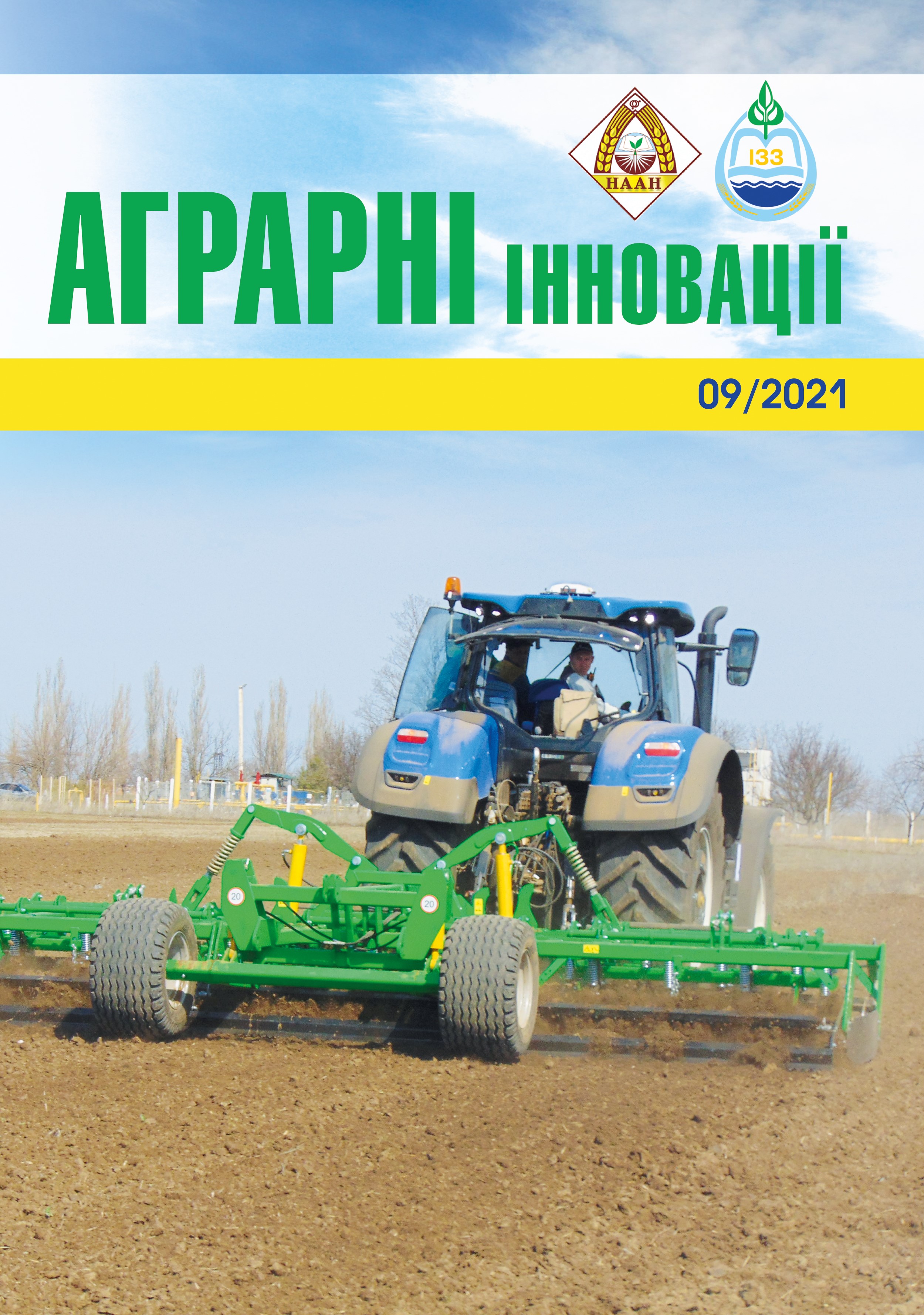Алелопатичні особливості гісопу лікарського (Hyssopus officinalis L.)
Abstract
Aim. To find out the influence of allelopathicactivity of aqueous extracts of leaves, stems, flowersand soil in the rhizosphere zone of plants of common hyssop (Hyssopus officinalis L.) on the growth of watercressroots (Lepidium sativum L.). Methods. Allelopathic activitywas studied in water-soluble secretions of commonhyssop plants (Hyssopus officinalis L.). The establishmentof experiments, records and observations were performedaccording to the classical methods of A. M. Grodzinsky(1973) and V. M. Schmidt (1984). The inhibition index wascalculated using the Williamson method (1988). Results. Itwas found that the greatest allelopathic activity of the soil inthe root zone of hyssop was achieved in plants of the firstyear of vegetation and amounted up to 59.82%. The highestallelopathic activity of hyssop plants of the first yearof vegetation when using an aqueous solution of flowers wasmanifested at a concentration of 1:50 and amounted up to31.55%. At the same time, the length of the watercress rootswas 4.42 mm. The highest stimulating effect on the lineargrowth of watercress roots was achieved in the variant usingan aqueous extract of hyssop flowers of the second yearof vegetation at a concentration of 1:10. The root lengthof the test object was 5.36 mm. The greatest allelopathiceffect of an inhibitory nature occurred with the useof an aqueous extract at a concentration of 1:10 in the leaf+ stem variant of plants of the third year of vegetation. Thelength of the watercress roots was 0.68 mm. Conclusions.It was shown the dependence of the allelopathic activityof common hyssop (Hyssop officinalis L.) on the ageand concentration of aqueous extracts of leaves, stemsand flowers and soil in the rhizosphere zone of the plant.It was established the allelopathic effect of water extractsof root secretions and aboveground organs of hyssopplants (Hyssop officinalis L.) in the flowering phaseat concentrations of 1:100, 1:50 and 1:10 on the lineargrowth of watercress roots. It was the largest in the variantusing hyssop flowers at a concentration of an aqueoussolution of 1:10 of plants of the second year of vegetation.In contrast to the first and second years of vegetationof hyssop (Hyssop officinalis L.), the use of aqueoussolutions of plants of the third year of vegetation hadan inhibitory effect on the linear growth of watercress roots.
References
2. Гродзинський А.М. Основи хімічної взаємодії рослин : монография. Київ : Наукова думка, 1973. 207 с.
3. Жарінов В.І., Остапенко А.І. Вирощування лікарських, ефіроолійних, пряносмакових рослин : навчальний посібник. Київ : Вища школа, 1994. 234 с.
4. Машанов В.И., Покровский А.А. Пряноароматические растения. Москва : Агропромиздат, 1991. 287 с.
5. Постников Д.А., Курило А.А. Фитомелиоративное влияние горчицы белой и сафлора на содержание фосфора, калия и микробиологическую активность дерново-подзолистой почвы. Достижения науки и техники АПК. 2010. Вип. 2. С. 15–20.
6. Райс Э. Аллелопатия. Москва : Мир, 1978. 392 с.
7. Свистова И.Д., Кувшинова Н.М., Стекольников К.Е., Назаренко Н.Н. Лекарственные растения как фитомелиоранты на черноземе выщелоченном. Научные ведомости. Серия Естественные науки. 2016. № 4 (225). Вип. 34. С 32–38.
8. Шмидт В.М. Математические методы в ботанике. Ленинград : Ленинградский университет, 1984. 288 с.
9. More than 40% of all agricultural land in Ukraine may lose fertility, according to research. Ecoaction. 2021. URL: https://en.ecoaction.org.ua/more-than-40-agland-may-lose.html
10. Ukraine. Knowledge Hub. 2018. URL: https://knowledge.unccd.int/home/country-information/countries-having-set-voluntary-ldn-targets/ukraine
11. Bruce Williamson G., Richardson D. Bioassays for allelopathy: Measuring treatment responses with independent controls. Journal of Chemical Ecology. 1988. Vol. 14, no. 1. Р 181–187. URL: https://doi.org/10.1007/bf01022540
12. Zorikova O., Manyakhin A., Koldaev V., Moiseenko L., & Litvinova E. Allelopathic activity of patrinia scabiosifolia and Рatrinia rupestris. Biomedical and Pharmacology Journal. 2017. Vol. 10, no. 02. 651–658 pp. https://doi.org/10.13005/bpj/1152






